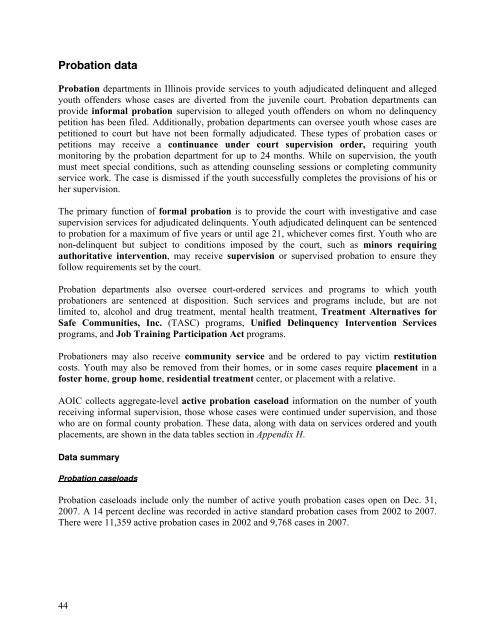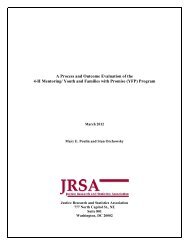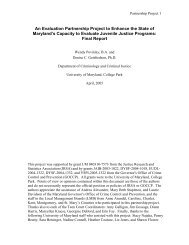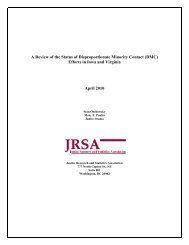Juvenile Justice System and Risk Factor Data - Illinois Criminal ...
Juvenile Justice System and Risk Factor Data - Illinois Criminal ...
Juvenile Justice System and Risk Factor Data - Illinois Criminal ...
Create successful ePaper yourself
Turn your PDF publications into a flip-book with our unique Google optimized e-Paper software.
Probation data<br />
Probation departments in <strong>Illinois</strong> provide services to youth adjudicated delinquent <strong>and</strong> alleged<br />
youth offenders whose cases are diverted from the juvenile court. Probation departments can<br />
provide informal probation supervision to alleged youth offenders on whom no delinquency<br />
petition has been filed. Additionally, probation departments can oversee youth whose cases are<br />
petitioned to court but have not been formally adjudicated. These types of probation cases or<br />
petitions may receive a continuance under court supervision order, requiring youth<br />
monitoring by the probation department for up to 24 months. While on supervision, the youth<br />
must meet special conditions, such as attending counseling sessions or completing community<br />
service work. The case is dismissed if the youth successfully completes the provisions of his or<br />
her supervision.<br />
The primary function of formal probation is to provide the court with investigative <strong>and</strong> case<br />
supervision services for adjudicated delinquents. Youth adjudicated delinquent can be sentenced<br />
to probation for a maximum of five years or until age 21, whichever comes first. Youth who are<br />
non-delinquent but subject to conditions imposed by the court, such as minors requiring<br />
authoritative intervention, may receive supervision or supervised probation to ensure they<br />
follow requirements set by the court.<br />
Probation departments also oversee court-ordered services <strong>and</strong> programs to which youth<br />
probationers are sentenced at disposition. Such services <strong>and</strong> programs include, but are not<br />
limited to, alcohol <strong>and</strong> drug treatment, mental health treatment, Treatment Alternatives for<br />
Safe Communities, Inc. (TASC) programs, Unified Delinquency Intervention Services<br />
programs, <strong>and</strong> Job Training Participation Act programs.<br />
Probationers may also receive community service <strong>and</strong> be ordered to pay victim restitution<br />
costs. Youth may also be removed from their homes, or in some cases require placement in a<br />
foster home, group home, residential treatment center, or placement with a relative.<br />
AOIC collects aggregate-level active probation caseload information on the number of youth<br />
receiving informal supervision, those whose cases were continued under supervision, <strong>and</strong> those<br />
who are on formal county probation. These data, along with data on services ordered <strong>and</strong> youth<br />
placements, are shown in the data tables section in Appendix H.<br />
<strong>Data</strong> summary<br />
Probation caseloads<br />
Probation caseloads include only the number of active youth probation cases open on Dec. 31,<br />
2007. A 14 percent decline was recorded in active st<strong>and</strong>ard probation cases from 2002 to 2007.<br />
There were 11,359 active probation cases in 2002 <strong>and</strong> 9,768 cases in 2007.<br />
44

















